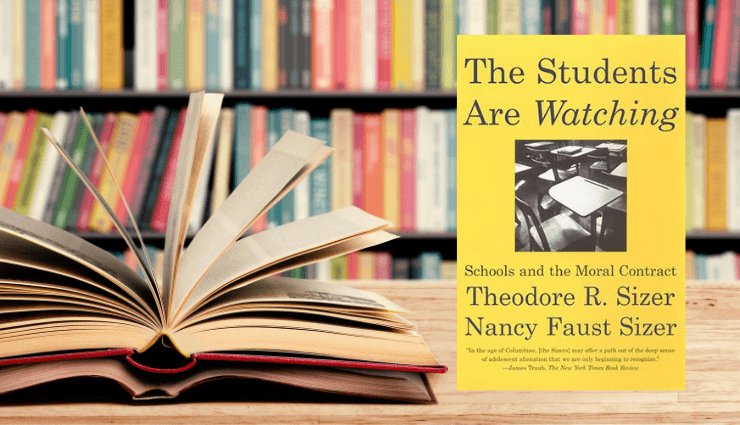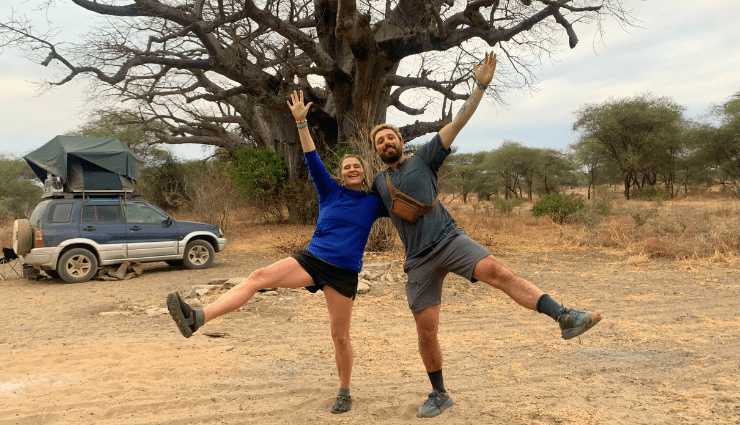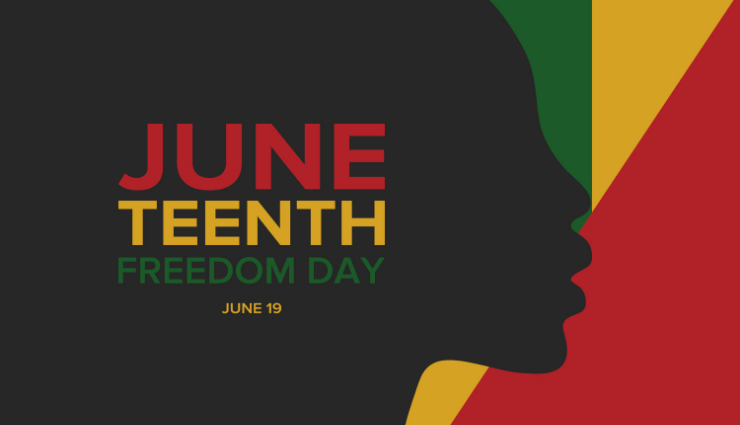The Students Are Watching Us — More Closely Now Than Ever

Early in his career in education, Theodore Sizer dug deeply into the question of what the American high school is and what it should be. This study led him to write a series of groundbreaking books — including “Horace’s Compromise,” “Horace’s Hope,” and “Horace’s School” — that collectively offer both deep criticism of the American high school of the late 20th century and detailed ways for restructuring them.
In 1999, Sizer followed all this by collaborating with his wife Nancy Faust Sizer, then a professor of education at Harvard’s Graduate School of Education, on another remarkable book, “The Students Are Watching,” that manages to distill much of Sizer’s earlier writing into an easy-to-read book that nevertheless challenges educators of each generation to reexamine their practices through a moral lens.
With all the challenges that schools face this year — the COVID-19 pandemic, a sharpening political divide, violent racial and class tensions — I re-read “The Students Are Watching” to see how it might help us manage, lead, and improve schools during these difficult times.
Educating the Heart and Mind
While there are elements of the book that reflect the world of education and the American society at the dawn of the 21st century, it’s impressive how pertinent it remains today — and not just for high schools. Indeed, as one independent school reviewer noted in a 2015 blog urging more readers, the tenets of “The Students Are Watching” “are timeless and relevant.” Perhaps the main reason for this timelessness is that the Sizers unflinchingly look at all aspects of school through a well-polished moral lens. For independent school readers, it worth noting that the Sizers even quote Samuel Phillips, who in founding Phillips Academy (Andover) (MA) in 1778, said that, “above all, it is expected that the Master’s attention to the disposition of the Minds and Morals of the Youth, under his charge, will exceed every other care; well considering that, though goodness without knowledge… is weak and feeble; yet knowledge without goodness is dangerous; and that both united form the noblest of characters, and lay the surest foundation of usefulness to mankind.”
I know no educator who disagrees with this essential view of educating for the heart and mind with the broader aim of laying the foundation for each generation’s usefulness to mankind. Yet when folded into the complexities of American society — especially in pivotal times such as now — developing a system of teaching and learning that both functions morally and helps all students develop their moral reasoning skills is a constant challenge, and one getting increasingly difficult. This holds true for both public and private schools.
What the Sizers do, overall, as another reviewer put it, is to help us see that “moral education is not a separate curriculum, but is instead embedded in the life of the school.”
Following on this principle, we are asked to examine all aspects of school life to better understand what we are getting right, where we are faulting, and what we can do to move each school toward its ideal vision of itself. The revolution in education, the Sizers say, is for educators to see themselves as “activists” who will focus steadily on creating a teaching and learning environment that shows deep respect for all students and all adults within the school. Mission statements are one thing. What we do in school — the mores, the routines, the ways of the school — matters most. In other words, the students are watching us. They want to know how we treat each other, how we treat students, how we engage in the life of the mind, and how we engage in matters of the heart.
“Schools,” the Sizers write, “exist to change young people. The young people should be different — better — for their experience there.”
The act of trying to change young people for the better is a deeply moral act. Thoughtfully engaging in this process is essentially all the Sizers are asking. But, of course, it’s a complex and evolving process.
Always Learning and Evolving
What is perhaps most interesting about “The Students Are Watching” is that each chapter title is a gerund encapsulating an area of school life that requires thoughtful response. In order, the chapters are: Watching, Modeling, Grappling, Bluffing, Sorting, Shoving, and Fearing, with an afterword titled Thinking. Some of these gerunds encourage particular positive dispositions — teachers “modeling” moral and intellectual behavior; students being encouraged to “grapple” with complex issues within the context of a respectful learning community. Some of the gerunds underscore gnarly challenges. If high schools are in the business of “sorting” students, how do educators approach the process fairly and morally? Educators are always in the process of “shoving” kids — respectfully challenging them — to achieve more than they think they can. But how do we both shove and protect students? What exactly are we pushing them to achieve? And do we model these qualities in our own lives and work? And how much pushback do we encourage and accept from our students?
Most of these gerunds are double-edged swords that apply to teachers and students and to schools themselves. By looking at each school activity from these various angles, the Sizers are able to help us focus on what matters most — how to model, what issues schools must grapple with in and out of the classroom, how to instill a level of respect for adults that encourages engagement without doing harm, etc. Overall, how do we rework the systems of the American high school so that we turn down the elements that isolate and discourage and turn up those that connect and engage?
Perhaps most important, the Sizers encourage us to understand that everything about a school is evolving. Always. We are deep in the process of becoming the best school we can envision. But there is no end line.
What I also love about this book is the Sizers’ insistence that all students have something to add to school, to every class, to every rule and actions. Without simplifying the complexities of school life, they encourage a thoughtful balance of student agency and community needs. When education in America felt more routine than it does now, much of this work was quietly embedded in the community. But today, with the gazillion questions and issues related to teaching during a pandemic, the balance of student agency and community needs have become front and center.
The editor of Beacon Press, publisher of “The Students Are Watching,” writes of the Sizers, “Few people approach education and the lives of children with the clarity and force of conviction that Ted and Nancy Sizer possess.” Such clarity and conviction makes “The Students Are Watching” a highly valuable book for our times. In a latter book, “The New American High School” (2013), Ted Sizer argues that the “design of our beloved high school as we know it has run its course,” and offers a detailed examination of the elements of the system that need to be reconsidered. It, too, is a book worth reading. But the timelessness embedded in “The Students Are Watching,” paradoxically, make it an ideal book for our time.
“If we care about our children’s values — how as a matter of habit they treat others and how aware they are of why they do what they do,” the Sizers write, “we must look in the mirror.”
As books go, “The Students Are Watching” is an excellent mirror.
Quotes from “The Students Are Watching”
On Nurturing Humanity:
“We are fallible, and should not pretend that we are anything else. But we ought to be aware of what we are doing. We have a profound moral contract with our students. We insist, under the law, that they become thoughtful, informed citizens. We must — for their benefit and ours — model such citizenship. The routines and rituals of a school teach, and teach especially about character…. The fear of barbarism which so animated our forebears is still there, even though we today may mask it with easier, softer language. All of us still struggle to be ‘civilized,’ and we need institutions which will nurture our humanity.”
On Asking Ourselves Questions:
“If we care about our children’s values — how as a matter of habit they treat others and how aware they are of why they do what they do — we must look in the mirror. Do we teachers, as a matter of habitual practice, bluff? Do we sort unfairly? Do we treat students harshly in the name of order rather than as a way to promote student growth? Do we grapple over unworthy things? Do we act in a manner which reflects the values which we wish our students to assimilate? What do our actions tell our students about our purpose? About our principles Have we adopted a style which is insistently moral without becoming moralistic? Do we administrators and policy-makers impose regimens and instruments which are arguably thoughtful and fair?”
On the Quality of a School:
“To find the core of a school, don’t look at its rulebook or even its mission statement. Look at the way the people in it spend their time — how they relate to each other, how they tangle with ideas. Look for the contradictions between words and practice, with the fewer the better. Try to estimate the frequency and the honesty of its deliberations. Though it will always want to spruce up for visitors, its hour by hour functioning is what is important. Judge the school not on what it says but on how it keeps.”
Michael Brosnan is an independent writer and editor with a particular interest in education and social change. He can be reached www.michaelabrosnan.com.








